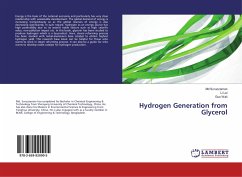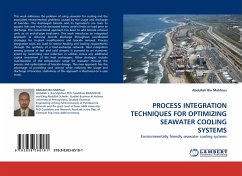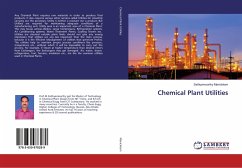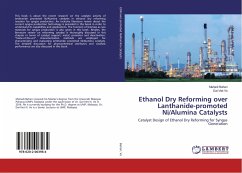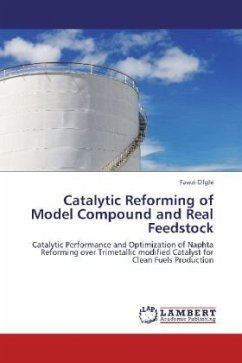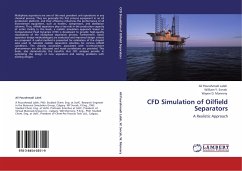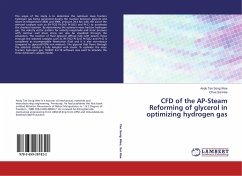
CFD of the AP-Steam Reforming of glycerol in optimizing hydrogen gas
Versandkostenfrei!
Versandfertig in 6-10 Tagen
36,99 €
inkl. MwSt.

PAYBACK Punkte
18 °P sammeln!
The scope of the study is to determine the optimum mass fraction hydrogen gas being generated during the reaction between glycerol and steam at temperature 483K and 498K, pressure 29.4 Bar with the aid of the selected catalysts such as (Pt-TiO2 Pt-ZnO Pt-SiO2 and Pt-C) to accelerate the chemical reaction. By determining the optimum mass fraction hydrogen gas, the velocity vector pattern for velocity magnitude and static pressure with contour wall shear stress can also be visualized through the simulation. The reaction of fluid (glycerol diffuse fully with steam), flows through the selected cat...
The scope of the study is to determine the optimum mass fraction hydrogen gas being generated during the reaction between glycerol and steam at temperature 483K and 498K, pressure 29.4 Bar with the aid of the selected catalysts such as (Pt-TiO2 Pt-ZnO Pt-SiO2 and Pt-C) to accelerate the chemical reaction. By determining the optimum mass fraction hydrogen gas, the velocity vector pattern for velocity magnitude and static pressure with contour wall shear stress can also be visualized through the simulation. The reaction of fluid (glycerol diffuse fully with steam), flows through the selected catalysts such as (Pt-TiO2 Pt-ZnO Pt-SiO2 and Pt-C) is considered as incompressible Newtonian fluid and it is also non-viscous compared to glycerol(100% non mixture). The glycerol that flows through the selected catalyst is fully mingled with steam. To optimize the mass fraction hydrogen gas, FLUENT 6.2.16 software was used to simulate the three dimension catalyst model.



